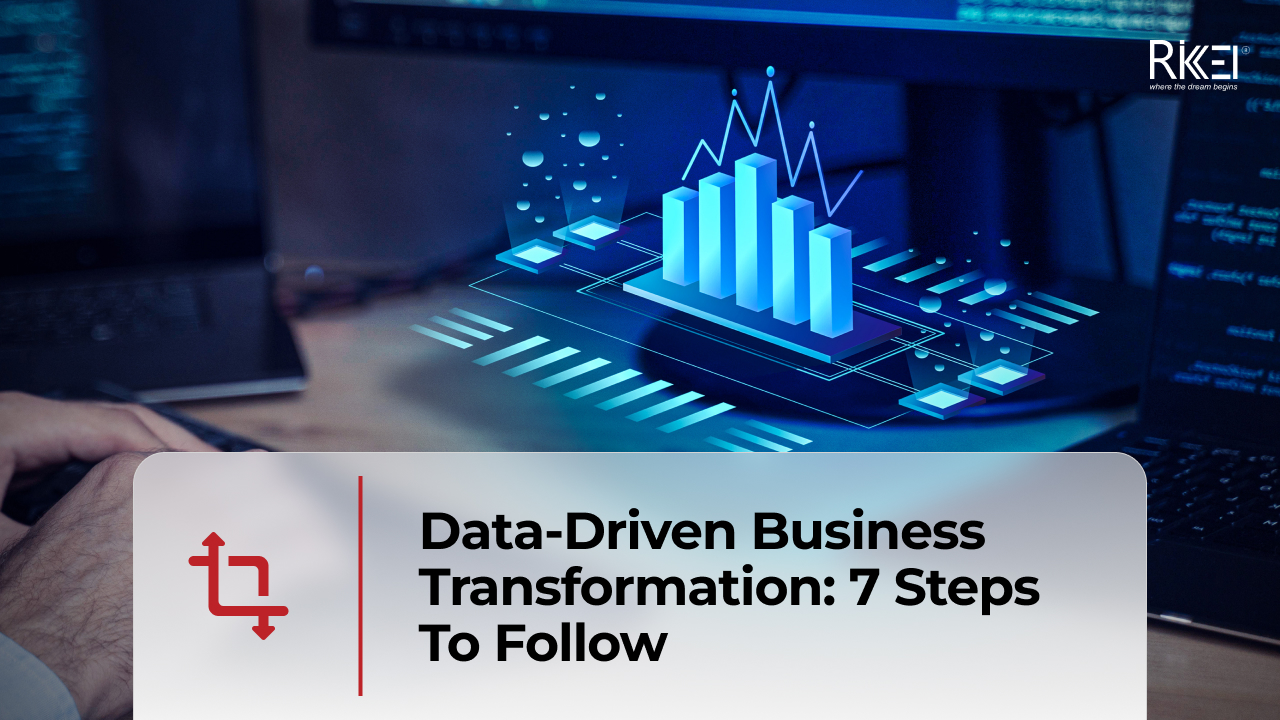What Is Oracle Business Intelligence? Their Role in Today’s Enterprises
Contents
Oracle Business Intelligence (BI) refers to a suite of tools, technologies, and applications designed to help organizations collect, analyze and present business data. The primary goal of Oracle BI is to provide actionable insights to support decision-making within an organization. Oracle BI encompasses a range of products that enable users to gather, process and visualize data from various sources to make informed business decisions.
Understanding Oracle Business Intelligence (Oracle BI)
Components of Oracle Business Intelligence
Oracle Business Intelligence (BI) is a comprehensive suite of tools and components designed to facilitate the collection, analysis and presentation of business data. The components of Oracle BI are organized to provide a complete solution for various aspects of business intelligence.
- Oracle BI Server: This component acts as the foundation of the Oracle BI architecture. It provides a semantic layer that abstracts the complexities of underlying data sources and enables users to access and analyze data from various sources in a unified manner.
- Oracle BI Dashboards: Dashboards are a key component for visualizing and monitoring business performance. Oracle BI Dashboards enable users to create interactive and customizable dashboards that display key metrics, charts, and reports. Users can personalize dashboards to suit their specific needs and monitor real-time data.
- Oracle BI Publisher: This component enables the creation, management, and delivery of pixel-perfect reports and documents. It allows users to design and generate reports in various formats (such as PDF, Excel, and HTML) based on data from Oracle BI and other data sources.
- Oracle BI Mobile: Oracle BI Mobile provides mobile access to business intelligence content. Users can view dashboards, reports, and alerts on their mobile devices, ensuring that critical information is accessible anytime, anywhere.
- Oracle BI Delivers: This component enables the scheduling and delivery of personalized reports, dashboards and alerts to users via email, file servers or other channels. It allows users to receive relevant information automatically, ensuring timely access to critical insights.
The role of Oracle Business Intelligence in data analysis, reporting, and visualization
Data Analysis:
- Oracle BI allows organizations to integrate data from various sources, providing a unified view of business information. This integration is crucial for comprehensive data analysis.
- The Oracle BI Repository stores metadata definitions that help define the structure of the data. This metadata simplifies the process of data analysis by providing a logical representation of the underlying data sources.
Reporting:
- Oracle BI provides tools such as BI Publisher for creating highly formatted and interactive reports. Users can design reports that meet specific formatting requirements and include charts, tables, and other visual elements.
- Oracle BI Delivers allows users to schedule the delivery of reports to specified recipients. This ensures that stakeholders receive timely and relevant information without manual intervention.
- BI Publisher, integrated with Oracle BI, supports the creation of pixel-perfect reports. This is particularly useful when precise formatting and layout are essential for regulatory or business requirements.
Visualization:
- Oracle BI Dashboards enable the creation of interactive and visually appealing dashboards. Users can combine charts, graphs, and other visual elements to create a comprehensive view of key performance indicators (KPIs) and metrics.
- Oracle BI supports a variety of data visualization options, including bar charts, pie charts, line graphs, heat maps, and more. These visualizations help users quickly understand trends and patterns in the data.
- Oracle BI’s mobile capabilities allow users to access dashboards and visualizations on mobile devices, ensuring that decision-makers have access to critical information while on the go.
Highlight its importance in decision-making
The importance of Oracle Business Intelligence (BI) in decision-making cannot be overstated. It plays a pivotal role in decision-making by providing the tools and insights necessary for organizations to navigate a complex business landscape. It empowers decision-makers to make strategic, well-informed choices that drive business success and competitive advantage.
Here are key aspects highlighting its significance in decision-making:
- Oracle BI allows decision-makers to access and analyze data from diverse sources, providing a holistic view of the organization’s performance. This ensures that decisions are based on accurate, timely, and relevant information.
- Oracle BI enables organizations to access real-time data, allowing decision-makers to respond promptly to changing business conditions. Timely insights are crucial for adapting strategies, seizing opportunities, and addressing challenges as they arise.
- The robust data analysis capabilities of Oracle BI allow decision-makers to conduct in-depth analyses of trends, patterns, and outliers. This comprehensive analysis provides a deeper understanding of the factors influencing business performance.
- Oracle BI supports the creation of customized reports and dashboards tailored to the specific needs of decision-makers. This ensures that relevant information is presented in an easily understandable format, facilitating quicker and more accurate decision-making.
Features and capabilities of Oracle Business Intelligence
Details of the key features and capabilities of Oracle BI
- Data Integration: Oracle BI supports seamless integration with a variety of data sources, including databases, data warehouses, big data platforms, cloud services, and more. It enables users to consolidate and blend data from disparate sources into a single, unified view for analysis.
- Data Modeling and Metadata Management: Oracle BI provides robust tools for data modeling and metadata management. The Oracle BI Administration Tool allows administrators to define the logical data models, hierarchies, calculations, and security settings that govern data access and analysis. It ensures consistency, accuracy, and data governance across the organization.
- Ad-Hoc Analysis: Users can perform ad hoc analysis using Oracle BI’s intuitive query and analysis capabilities. They can create custom queries, apply filters, drill down into data, perform calculations, and visualize results in real-time. The interactive analysis features enable users to explore data from different angles and gain deeper insights.
- Interactive Dashboards: Oracle BI enables the creation of interactive dashboards that provide a consolidated view of key performance indicators (KPIs) and metrics. Users can customize dashboards with charts, graphs, tables, and other visualizations to monitor business performance, identify trends, and track progress towards goals.
- Reporting and Publishing: Oracle BI offers robust reporting capabilities with Oracle BI Publisher. Users can design pixel-perfect reports and documents using a wide range of formatting options. Reports can be generated in various formats (PDF, Excel, HTML) and distributed via email, file servers, or other channels. Oracle BI Delivers allows scheduled and personalized report delivery to stakeholders.
- Data Visualization: Oracle BI provides advanced data visualization capabilities to communicate insights effectively. Users can create compelling visualizations such as charts, graphs, maps, and infographics to present data in a meaningful and visually appealing manner. Interactive visualizations enable users to explore data dynamically and gain deeper insights.
Discuss data integration, analytics, reporting, and dashboards
Integration: Oracle BI facilitates the integration of data from diverse sources, providing a unified and centralized platform for analysis and reporting.
Analytics: Oracle BI offers tools for both ad-hoc and predictive analytics, empowering users to explore data and gain insights for informed decision-making.
Reporting: With BI Publisher and scheduled reporting capabilities, Oracle BI allows the creation and automated delivery of formatted reports, ensuring stakeholders receive relevant information.
Dashboards: Oracle BI Dashboards provide a visual and interactive way for users to monitor key metrics, trends, and performance indicators, supporting quick and effective decision-making.
Together, these elements contribute to Oracle Business Intelligence’s role in helping organizations transform raw data into meaningful insights for improved decision-making across the enterprise.
Illustrate how these features benefit businesses
1. Data Integration
Illustration: A retail business can integrate data from point-of-sale systems, inventory databases, and online sales platforms. This integration allows them to analyze sales trends, optimize inventory levels, and improve overall supply chain management.
2. Analytics
Illustration: An e-commerce company can use analytics to understand customer behavior, such as browsing patterns and purchase history. This information helps in tailoring marketing strategies, optimizing product offerings, and enhancing the overall customer experience.
3. Reporting
Illustration: A financial institution can use reporting features to generate regulatory compliance reports, financial statements, and performance summaries. This ensures that stakeholders have accurate and timely information for strategic planning and compliance purposes.
4. Dashboards
Illustration: A manufacturing company can create dashboards that display real-time production metrics, equipment efficiency, and quality control data. This enables operations managers to identify bottlenecks, optimize processes, and improve overall production efficiency.
Oracle BI Products and Offerings
Explore the various Oracle BI products and solutions
1. Oracle Analytics Cloud (OAC)
Overview: Oracle Analytics Cloud is a cloud-based platform that provides self-service analytics, data visualization, and business intelligence capabilities.
Features:
– Self-service data exploration and analysis.
– Data visualization with interactive dashboards and reports.
– Advanced analytics, including predictive analytics and machine learning.
– Integration with various data sources, including cloud and on-premises databases.
2. Oracle Data Integrator (ODI)
Overview: Oracle Data Integrator is a comprehensive data integration platform that enables ETL (Extract, Transform, Load) processes.
Features:
– High-performance data movement and transformation.
– Integration with Oracle BI for seamless data integration.
– Support for both batch and real-time data integration scenarios.
3. Oracle BI Applications
Overview: Oracle BI Applications are pre-built business intelligence solutions tailored for specific industries or business functions.
Features:
– Ready-to-use data models, reports, and dashboards.
– Industry-specific analytics for areas such as finance, human resources, and supply chain.
– Integration with Oracle ERP and CRM applications.
4. Oracle Business Intelligence Enterprise Edition (OBIEE)
Overview: Oracle BI Enterprise Edition is an on-premises business intelligence platform that offers a comprehensive set of tools for reporting, analytics, and dashboards.
Features:
– Ad-hoc query and analysis with Oracle BI Answers.
– Pixel-perfect reporting with Oracle BI Publisher.
– Centralized metadata repository for data modeling.
– Integration with Oracle Data Integrator (ODI) for ETL processes.
5. Oracle Spatial and Graph
Overview: Oracle Spatial and Graph is a solution for analyzing and visualizing spatial and graph data.
Features:
– Spatial analytics for location-based insights.
– Graph analytics for analyzing relationships in data.
– Integration with other Oracle BI tools for comprehensive analysis.
6. Oracle Day by Day
Overview: Oracle Day by Day is a mobile app that provides personalized analytics and insights on the go.
Features:
– Mobile access to Oracle Analytics Cloud content.
– Daily insights and recommendations based on user preferences.
– Integration with voice-activated commands for hands-free interaction.
Discuss Oracle Analytics Cloud, Oracle Business Intelligence Enterprise Edition (OBIEE), and more
These Oracle BI products collectively provide organizations with a wide array of capabilities, whether they prefer on-premises solutions or cloud-based offerings. The suite of tools addresses various aspects of business intelligence, from self-service analytics and data integration to reporting and advanced analytics. Businesses can choose the combination of Oracle BI products that best meets their specific requirements and aligns with their BI strategy.
Explain the scalability and customization options
Scalability
- Vertical Scalability: Oracle BI supports vertical scalability, which involves increasing the capacity of individual components within the system. For example, you can add more memory, processing power, or storage to the servers hosting Oracle BI to handle increased data loads and user concurrency.
- Horizontal Scalability: Oracle BI also supports horizontal scalability, which involves adding more servers to distribute the workload across multiple machines. This approach allows organizations to scale their BI infrastructure by adding additional servers to handle increased data processing and user requests.
- Clustered Deployment: Oracle BI supports clustering, where multiple servers are grouped to form a cluster. Clustering enhances scalability and fault tolerance by distributing the load across multiple nodes and providing redundancy. It ensures high availability and improves performance by leveraging the resources of multiple servers.
Customization
- Metadata Modeling: Oracle BI provides the Oracle BI Administration Tool, which allows administrators to define and customize the metadata layer. This includes creating logical data models, defining hierarchies, calculations, and security settings. Organizations can tailor the metadata layer to align with their specific business requirements and data structures.
- Report and Dashboard Customization: Oracle BI offers extensive customization options for reports and dashboards. Users can design and format reports according to their preferences, including adding custom logos, colors and styling.
- Custom Data Visualization: Oracle BI provides flexibility in creating custom data visualizations. Users can leverage Oracle’s Data Visualization SDK or third-party visualization libraries to develop and integrate custom visualizations into Oracle BI. This allows organizations to create unique visual representations of their data or industry-specific visualizations.
- Integrations and Extensions: Oracle BI provides various APIs and integration capabilities, allowing organizations to extend the functionality of Oracle BI and integrate it with their existing infrastructure. This enables seamless data transfers, real-time data updates, and integration with external data sources or custom applications.
Benefits for Enterprises
Outline the advantages of using Oracle BI for businesses
Oracle Business Intelligence (BI) offers several advantages for businesses seeking robust analytics, reporting, and data-driven decision-making capabilities. Here’s an outline of the key advantages of using Oracle BI:
- Oracle BI provides a comprehensive suite of tools and solutions, including Oracle Analytics Cloud (OAC) and Oracle Business Intelligence Enterprise Edition (OBIEE), covering a wide range of business intelligence needs.
- Oracle BI enables organizations to integrate data from diverse sources, providing a unified view of business information. This consolidation supports comprehensive analysis and reporting.
- Oracle BI is designed for scalability, allowing organizations to handle growing data volumes and user demands. It supports both horizontal and vertical scalability to adapt to changing business requirements.
- Oracle BI prioritizes data security and governance, offering features such as role-based access control, encryption, and auditing. This ensures that sensitive business information is protected and compliant with regulatory requirements.
Discuss how it enhances data-driven decision-making and competitiveness
Oracle BI enhances data-driven decision-making and competitiveness by providing organizations with the tools and capabilities needed to turn raw data into actionable insights. From self-service analytics and predictive modeling to mobile access and collaboration, Oracle BI equips decision-makers with the tools they need to make timely, informed, and strategic decisions in a rapidly evolving business landscape.
Conclusion
Oracle Business Intelligence empowers businesses to harness the power of data for strategic decision-making and sustained growth. By leveraging advanced analytics, self-service capabilities and comprehensive visualizations, organizations can unlock valuable insights, gain a competitive advantage and thrive in today’s data-driven business landscape.
More From Blog

August 8, 2024
Data-Driven Product Development: Strategy To Drive More Sales
As a business owner, you want your products or services to be well-received upon launch. The most effective way to create a product that satisfies a broad range of customers is to gain insights into their needs and behaviors from the outset. The key lies in data-driven product development, a strategy that many companies have […]

August 8, 2024
7 Steps To Establish A Data-Driven Governance Program
While data-driven approaches significantly benefit organizations in various ways, failure to govern the huge data sets will hurt your business even more. Effective data management also ensures data quality and security. That’s why there is an increasingly high demand for data-driven governance programs. Continue reading for a detailed guide! What Is Data-Driven Governance? Surprisingly, many […]

August 8, 2024
Data-Driven Business Transformation: 7 Steps To Follow
Data empowers businesses to make well-informed decisions in different departments, like marketing, human resources, finance, and more. As a business owner, you should also employ data-driven approaches to skyrocket productivity and efficiency. If you are still new to this concept, scroll down for an in-depth guide on data-driven business transformation. What Does A Data-Driven Business […]

August 8, 2024
Data-Driven Security: Transforming Protection Through Analytics
Cybersecurity was once an afterthought for most organizations. But in today’s digital landscape, it has become mission-critical. With this transformation has also come a shift in how security decisions are made. Rather than relying solely on intuition and tradition, leading organizations are embracing data-driven strategies. By using metrics and insights around threats, vulnerabilities, and more, […]

August 8, 2024
Differences Between Data Science and Computer Science
Data Science and Computer Science are distinct fields overlapping in certain areas but have different focuses and objectives. The article below will help you clearly understand the differences and the close connection between the two fields. What is Data Science? Data Science is an interdisciplinary field that combines scientific methods, processes, algorithms, and systems to […]

August 8, 2024
How Real-Time Data Analysis Empowers Your Business
In today’s fast-paced business landscape, the ability to quickly make data-driven decisions has become a key differentiator for success. Real-time data analysis, the process of analyzing data as soon as it’s generated, has emerged as a powerful tool to empower business across industries. By leveraging real-time data analysis, organizations can gain timely and actionable insights, […]

